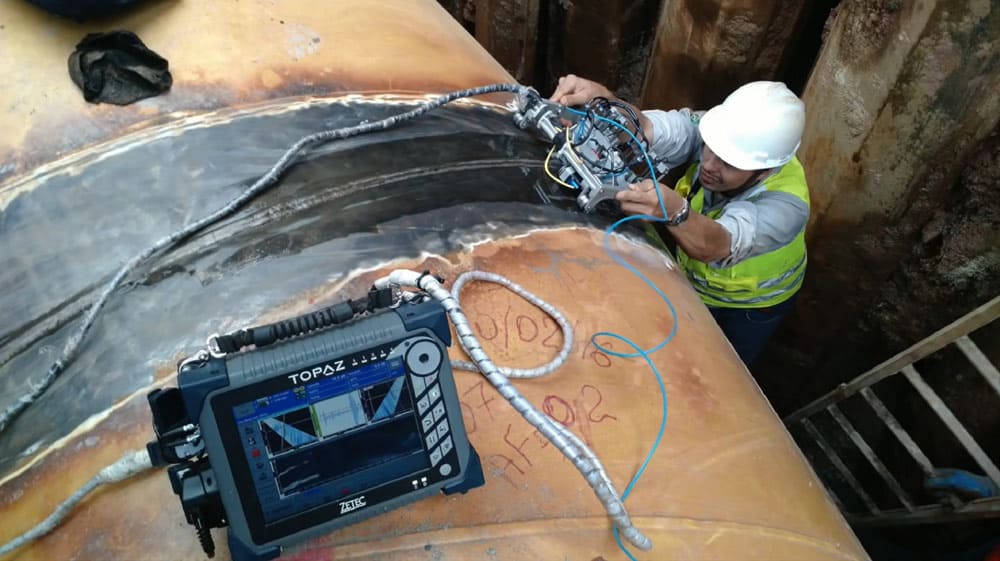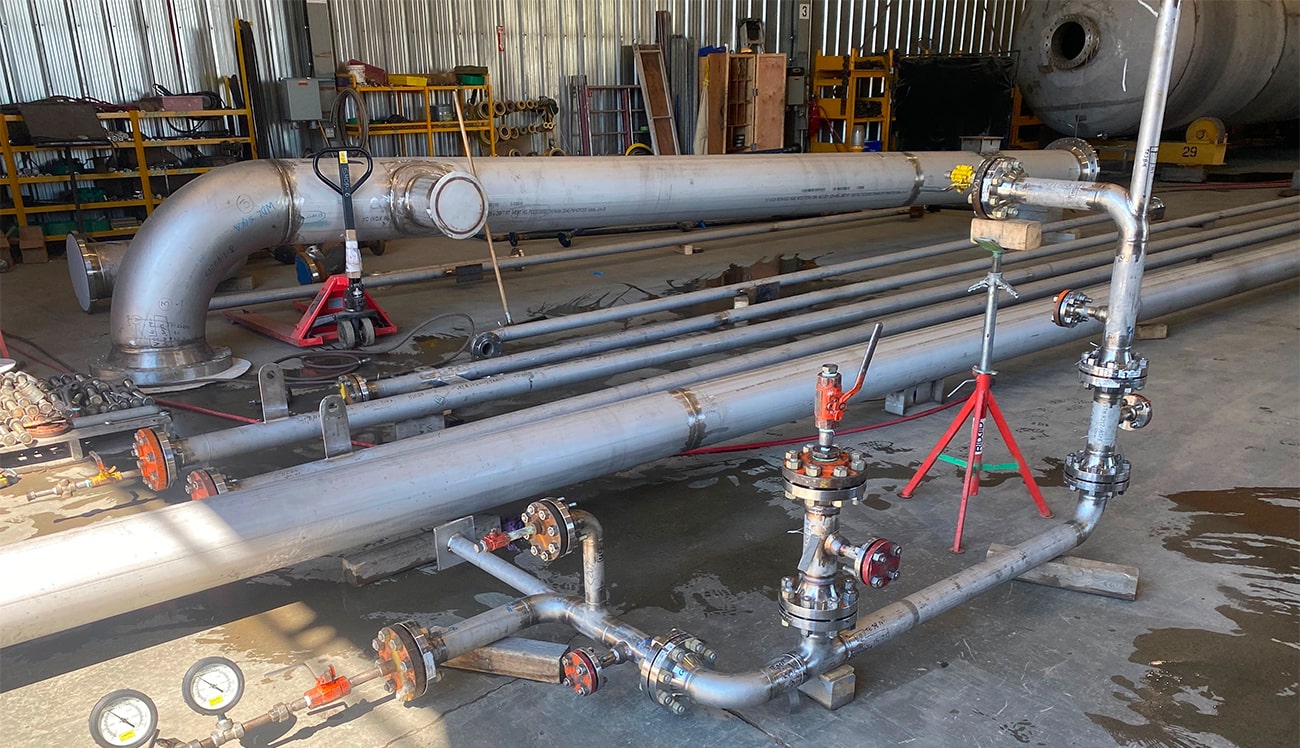Pipeline Welding Inspection: Specialist Services for High-Quality Welds
Wiki Article
Comprehending the Fundamentals of Pipeline Welding Examination: Critical Aspects for Assessing Weld High Quality and Averting Failings
In the world of pipeline welding examination, the stakes are indisputably high, requiring a comprehensive understanding of basic principles to guarantee weld top quality and reduce failing threats. Various important factors come into play, consisting of the choice of ideal products, the application of sophisticated examination techniques, and the acknowledgment of widespread welding problems.Importance of Weld Top Quality
The integrity of a pipeline is basically dependent on the quality of its welds, making weld quality an essential element in making sure reliable and safe operation. A pipeline weld offers as a joint factor where products are signed up with, and any deficiencies in this field can cause significant structural weaknesses. Poor weld high quality can cause leakages, tears, and tragic failings, posing serious security dangers and ecological threats.Several elements contribute to the quality of a weld, including the choice of welding process, the skills of the welder, and the problems under which the welding is done - Pipeline Welding Inspection. Poor preparation, improper warm input, and contamination can jeopardize weld stability, causing problems such as porosity, insufficient blend, or cracks. For that reason, rigid top quality control measures should be executed throughout the welding process to alleviate these dangers
In addition, the lasting efficiency of a pipe is greatly affected by the toughness of its welds. Top notch welds not only enhance the total stamina of the pipeline but additionally prolong its life span, lowering the demand for expensive repair work and downtime. Hence, making certain remarkable weld high quality is paramount in pipe style and maintenance techniques.
Secret Assessment Methods
Ensuring weld top quality requires the application of effective examination strategies to determine possible problems before they lead to failings. Pipeline Welding Inspection. Among one of the most extensively used approaches are aesthetic evaluation, radiographic screening (RT), ultrasonic testing (UT), and magnetic particle testing (MT) Each strategy serves a distinctive function and is selected based upon the specific needs of the pipeline jobAesthetic evaluation is the very first line of defense, allowing inspectors to evaluate surface conditions, alignment, and overall workmanship. Radiographic testing provides a comprehensive view of interior weld stability by utilizing X-rays or gamma rays to find subsurface imperfections.
Ultrasonic screening utilizes high-frequency acoustic waves to review the density and stability of welds, making it excellent for spotting internal gaps. Magnetic bit testing is a reliable technique for determining surface and near-surface flaws on ferromagnetic materials by applying electromagnetic fields and fine ferrous particles. By using these crucial assessment strategies, pipe welding assessors can ensure the greatest high quality standards are kept, inevitably leading to more secure and extra trustworthy pipe systems.
Typical Welding Defects
In the world of pipeline welding, recognizing typical welding defects is vital for maintaining architectural integrity and safety and security. These flaws can lead to disastrous failures otherwise identified and attended to promptly. Amongst one of the most common issues are porosity, which happens when gas allures in the weld metal, producing voids that deteriorate the joint. Another considerable issue is absence of blend, where the weld metal does not appropriately bond with the base material, compromising Continued the joint's stamina.
Splits are additionally a vital worry, showing up in numerous forms such as hot cracks, cold fractures, and root fractures. Each kind presents one-of-a-kind obstacles and calls for specific evaluation methods for detection. Undercut is one more flaw that can lower the weld's cross-sectional location, bring about stress concentration factors, while slag inclusion occurs when non-metallic material ends up being trapped in the weld swimming pool, adversely affecting the mechanical properties of the weld.
In addition, wrong grain form can result in unequal tension distribution. Recognizing these usual issues is crucial for welders and inspectors alike, as very early detection and adjustment are vital to guaranteeing the longevity and integrity of pipe systems.

Products and Their Effect
Choosing the appropriate products for pipe welding considerably affects the overall efficiency and integrity of the welded joints. The option of base steels, filler products, and finishings plays a crucial function in determining the toughness, deterioration resistance, and sturdiness of the welds. For circumstances, carbon steel is commonly utilized for its equilibrium of toughness and cost, however it may be vulnerable to deterioration in particular atmospheres, demanding the usage of protective finishings or corrosion-resistant alloys.Furthermore, dissimilar steel welding calls for mindful factor to consider of thermal development residential or commercial properties and prospective galvanic corrosion. The compatibility of materials can significantly impact the microstructure of the weld, resulting in variations in mechanical homes. For instance, stainless steel provides outstanding corrosion resistance but might call for certain filler products to make sure an audio weld joint.
Additionally, the impact of temperature home and ecological problems on material selection can not be ignored. High-strength steels may shed ductility at raised temperature levels, while low-temperature applications may require products with boosted strength. Ultimately, understanding the implications of product options is necessary for accomplishing ideal weld quality and preventing failures in pipeline systems.

Regulative Requirements and Compliance
Governing standards and compliance play an essential duty in pipeline welding, establishing the structure within which secure and effective techniques are kept. These criteria are created by numerous companies, consisting of the American Culture of Mechanical Designers (ASME), the American Welding Society (AWS), and the Pipeline and Hazardous Materials Safety Administration (PHMSA) Following these policies guarantees that welding procedures meet the required top quality and safety and security criteria.
Compliance with regulative standards is important not just for ensuring the honesty of the welds however likewise for protecting the environment and public safety and security. Examiners are entrusted with confirming that welding operations adhere to these requirements through strenuous assessments of both the processes and the last welds. This includes reviewing welder credentials, welding procedures, and the products utilized.
Failure to abide with recognized regulations can cause significant effects, including pricey repair services, legal obligations, and catastrophic failings. Therefore, companies must incorporate compliance into their functional methods, cultivating a culture of security and quality. Routine training and audits are critical elements in maintaining adherence to these regulative criteria, making sure that all personnel are knowledgeable and outfitted to support the highest degree of pipe welding quality.
Conclusion
Finally, a thorough understanding of pipe welding examination is crucial for ensuring weld top quality and avoiding failings. By utilizing key examination techniques and acknowledging usual welding defects, assessors can efficiently assess the stability of welds. Factor to consider of material selection and adherence to governing criteria additionally improve the integrity and safety and security of pipeline systems. Ultimately, these methods add to the avoidance of leakages and tragic failings, emphasizing the critical significance of rigorous evaluation processes in pipeline construction and maintenance.
In the world of pipeline welding evaluation, the stakes are undoubtedly high, necessitating a comprehensive why not check here understanding of fundamental concepts to make sure weld high quality and reduce failure threats (Pipeline Welding Inspection).The stability of a pipeline is basically dependent on the high quality of its welds, making weld quality a crucial factor in making certain risk-free and efficient operation.Several factors add to the high quality of a weld, including the selection of welding process, the abilities of the welder, and the conditions under which the welding is performed. Undercut is an additional flaw that can decrease the weld's cross-sectional location, leading to anxiety concentration factors, while slag addition takes place when non-metallic product becomes entraped in the weld swimming pool, adversely influencing the mechanical properties of the weld
In verdict, an extensive understanding of pipeline welding assessment is important for making certain weld high quality and protecting against failings.
Report this wiki page